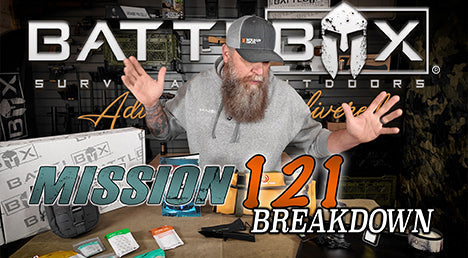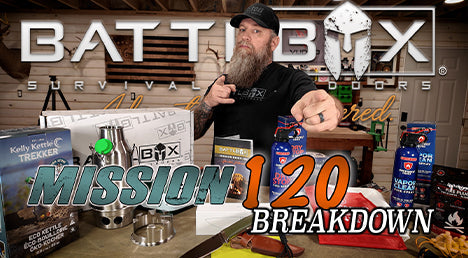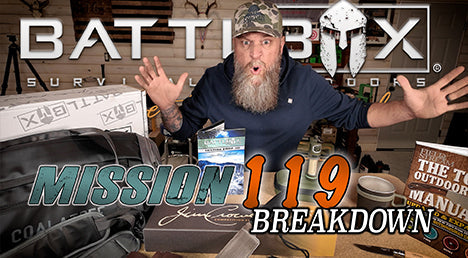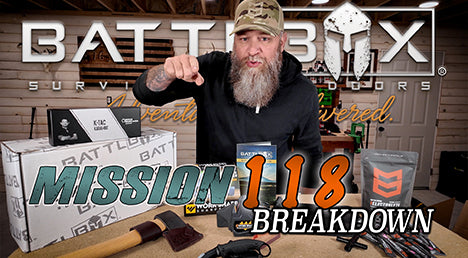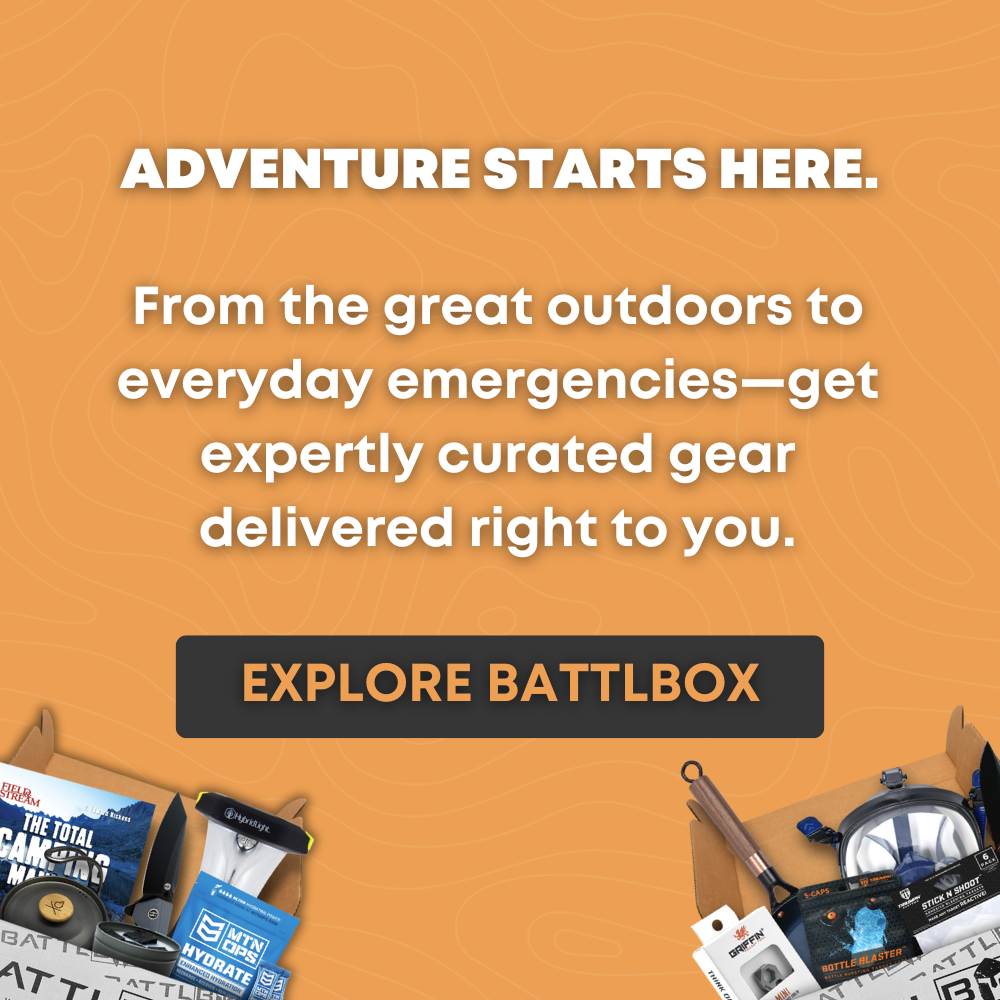Battlbox
How to Pack for a Backpacking Trip: A Comprehensive Guide
Table of Contents
- Introduction
- Choosing the Right Backpack
- The Packing Hierarchy: Bottom, Middle, and Top
- Essential Packing Tips
- Conclusion
- FAQ
Introduction
Imagine standing at the trailhead, the fresh scent of pine wafting through the air, your heart racing with anticipation for the adventure that lies ahead. Yet, before you take that first step into the wild, there's one crucial element that can make or break your backpacking experience: how you pack your gear. Did you know that improper packing can lead to discomfort, fatigue, and even injuries on the trail? Understanding how to pack for a backpacking trip is more than just stuffing items into your bag; it’s about mastering the art of organization, weight distribution, and accessibility.
In this guide, we’ll delve into the essential principles of packing your backpack efficiently, ensuring that every item you need is easily accessible while maintaining comfort during your trek. From choosing the right gear to understanding packing order, we will equip you with the knowledge to enhance your outdoor adventures. By the end, you will not only know how to pack efficiently but also how to choose items that complement your journey into the wilderness.
We will cover various aspects, including:
- The importance of choosing the right backpack.
- Understanding the packing hierarchy: bottom, middle, and top.
- Key items and their ideal locations within your pack.
- Tips for external attachments and organization.
- How to ensure waterproofing and protection of your gear.
So, grab your gear and let’s embark on this journey to uncover the secrets of packing for a backpacking trip effectively!
Choosing the Right Backpack
Before we dive into the nitty-gritty of packing, let’s talk about the foundation of your packing experience: your backpack. A well-chosen backpack can significantly influence your comfort and ease of access during your trip.
Types of Backpacks
- Daypacks: Ideal for short excursions, these packs typically hold 15-30 liters and are suitable for carrying essentials like water, snacks, a first-aid kit, and extra clothing.
- Weekend Packs: These packs range from 30-50 liters, accommodating more gear for overnight trips. They usually have compartments for sleeping bags and cooking gear.
- Multi-Day Packs: For extended trips, these larger packs (50 liters and above) are designed to carry everything you need for several days, including food, shelter, and clothing.
Key Features to Look For
- Fit: Make sure the backpack sits comfortably on your hips and shoulders. Adjustable straps are essential for customizing the fit to your body.
- Weight: Lightweight materials help keep your load manageable, especially on longer hikes.
- Compartments: Look for a pack with multiple compartments for better organization, allowing you to separate food, clothing, and gear.
- Waterproofing: Many backpacks come with built-in waterproof covers or are made from water-resistant materials. Consider investing in a pack liner for added protection against rain.
At Battlbox, we offer a range of high-quality backpacks perfect for your next adventure. Check out our Battlbox Shop for options that suit your needs.
The Packing Hierarchy: Bottom, Middle, and Top
When it comes to packing your backpack, the order of items significantly impacts your balance and accessibility. Let’s break down this hierarchy to optimize your packing strategy.
Bottom of the Pack
The bottom of your pack is reserved for items you won’t need until you reach your campsite. These should include:
- Sleeping Bag: A compressible sleeping bag should be packed at the very bottom to create a stable base.
- Sleeping Pad: If using a foam pad, it can be rolled and placed alongside the sleeping bag. For inflatable pads, pack them in a way that they fit snugly.
- Tent: While some hikers prefer to store their tents at the bottom, it’s often more advantageous to keep it accessible in the middle for quick setup.
Middle of the Pack
This area is for heavier items that you will need to balance your load:
- Food and Cooking Gear: Pack your food in a bear canister (if required) or in a stuff sack. Place heavier items like your stove and fuel canister in the middle for better weight distribution.
- Hydration: A water bladder should be placed close to your back to maintain balance and ease of access. Alternatively, consider packing water bottles in the side pockets for quick refills.
- Clothing: Store bulkier items like wet weather gear or extra layers here, ensuring they are easily accessible when the weather changes.
Top of the Pack
The top section should contain items you need most frequently on the trail:
- Snacks: Keep energy bars, nuts, and other quick snacks here for easy access while hiking.
- First Aid Kit: A compact first aid kit should be readily available for emergencies.
- Rain Gear: If rain is forecasted, keep your rain jacket or poncho at the top for quick deployment.
- Navigation Tools: Maps, compasses, or GPS devices should also be easily accessible.
Summary of Packing Order
- Bottom: Sleeping bag, sleeping pad, tent.
- Middle: Food, cooking gear, hydration, clothing.
- Top: Snacks, first aid kit, rain gear, navigation tools.
Adhering to this packing hierarchy can make your hiking experience smoother and more enjoyable.
Essential Packing Tips
To enhance your packing efficiency, consider the following tips that can help you stay organized and comfortable on your trip:
Use Packing Cubes and Dry Bags
Investing in packing cubes and dry bags can help you separate and organize your gear. Each cube can be designated for a specific category (e.g., clothing, cooking gear, etc.), making it easier to find what you need without rummaging through your entire pack.
Compression Straps
Most backpacks come with compression straps that help stabilize your load. After packing, tighten these straps to minimize movement and prevent discomfort. This is particularly important for maintaining balance when navigating uneven terrain.
Organize Your Gear by Usage
Place frequently used items in easily accessible pockets. For example, keep your snacks in hip belt pockets and your water bottles in side pockets. This way, you won’t have to take off your pack every time you need a drink or a quick bite.
Minimize External Attachments
While it may be tempting to attach gear externally, this can lead to a cluttered and unbalanced pack. Limit external attachments to lightweight items, such as trekking poles or a sun hat, to avoid snagging on branches or losing gear during your hike.
Waterproofing Your Gear
To protect your belongings from rain or accidental splashes, consider using a pack liner or dry bags for sensitive items like electronics and clothing. A quality pack cover can also provide an extra layer of protection.
Conclusion
Packing for a backpacking trip is an essential skill that can enhance your outdoor experience. By understanding the importance of your backpack, mastering the packing hierarchy, and implementing effective organization strategies, you can ensure a comfortable and enjoyable hike. Remember, the key to successful packing lies in balancing your load and making frequently used items easily accessible.
As you prepare for your next adventure, consider exploring our Battlbox Subscription Services for curated gear that will elevate your outdoor experience. Whether you’re just starting out or are a seasoned backpacker, Battlbox offers a variety of high-quality products tailored to your needs.
Feel empowered to hit the trails and embrace the beauty of the outdoors with confidence. Happy packing!
FAQ
What should I pack for a weekend backpacking trip?
For a weekend trip, you should pack a sleeping bag, sleeping pad, tent, food for two days, cooking gear, and clothing suitable for varying weather conditions. Don’t forget essential items like a first aid kit, navigation tools, and a multi-tool.
How do I ensure my pack is comfortable while hiking?
To ensure comfort, adjust the straps of your backpack for a snug fit, distribute weight evenly, and take regular breaks to assess your comfort level. If you feel discomfort, take the time to adjust the load and your gear.
Can I bring my dog on a backpacking trip?
Yes, many hikers bring their dogs along. Just ensure you have necessary supplies like food, water, a leash, and a dog-friendly first aid kit. Additionally, check trail regulations regarding pets before heading out.
How can I pack efficiently for a long-distance hike?
Packing efficiently for long-distance hikes involves selecting lightweight gear, organizing items by usage, and adhering to the packing hierarchy. Prioritize essentials and avoid overpacking to maintain a manageable load.
What if my backpack doesn’t fit all my gear?
If you find that your backpack is too small for your gear, consider a larger pack or reevaluate your gear to eliminate non-essential items. It’s important to prioritize what you truly need for your adventure.
Embark on your next backpacking adventure with confidence and expertise by mastering the art of packing. The right preparation can lead to unforgettable experiences in the great outdoors!
Share on:









